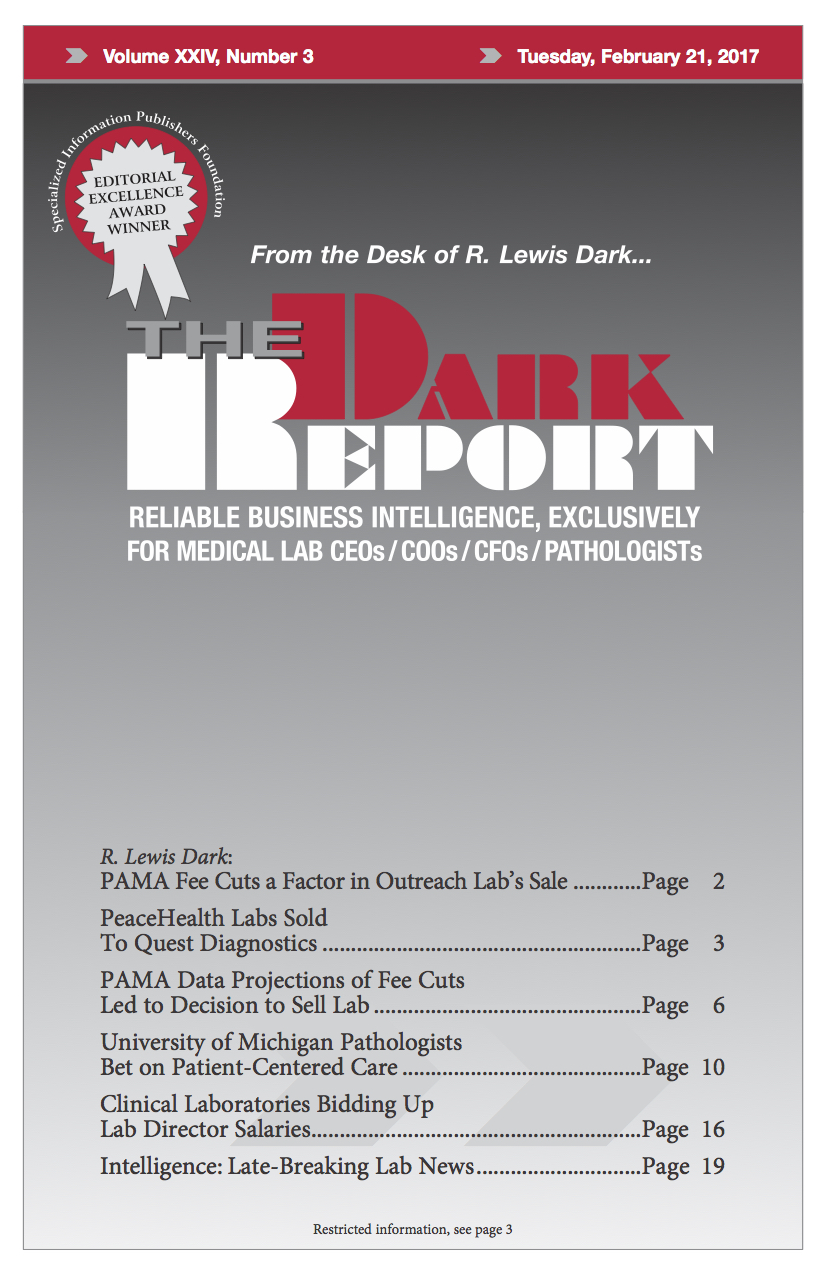CEO SUMMARY: There’s great news for pathologists and PhDs with expertise in molecular and genetic testing. Salaries are on the rise as more clinical labs build up their molecular and genetic testing programs and need talent to implement and supervise this activity. One experienced medical recruiter recently surveyed all the current pathology openings nationally. He …
Clinical Labs Bidding Up Lab Director Salaries Read More »
To access this post, you must purchase The Dark Report.


